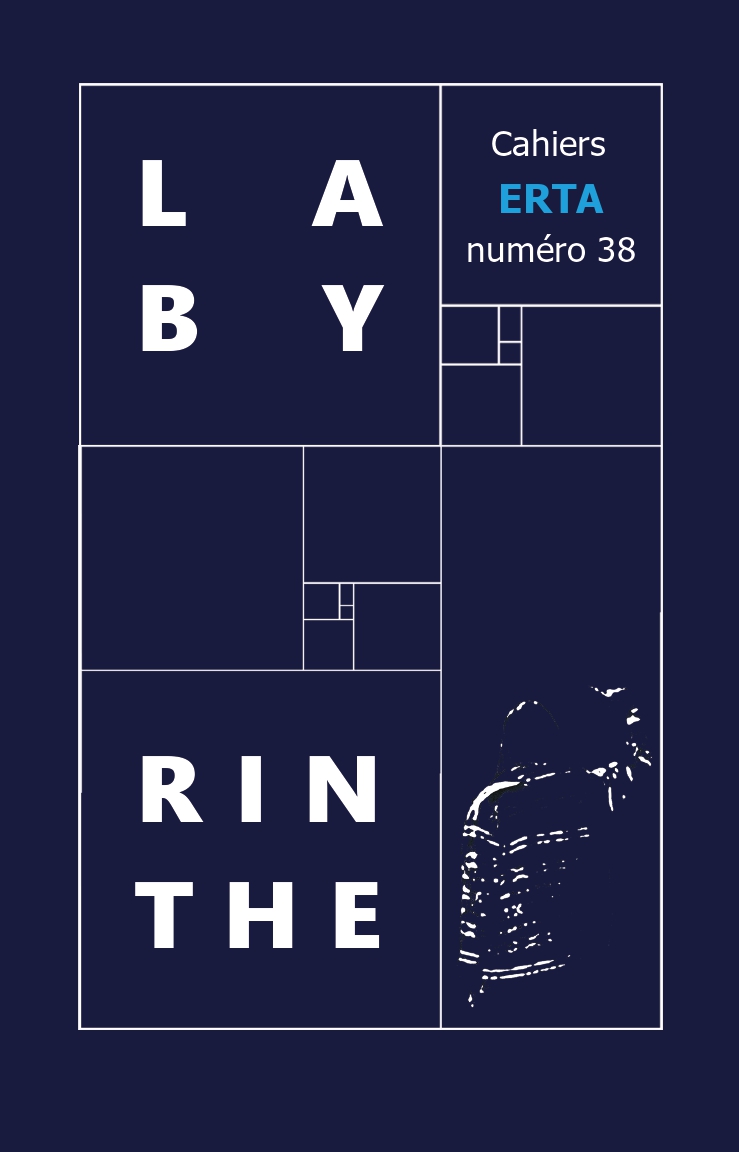Le labyrinthe comme motif métadiscursif dans la création littéraire de Christian Grenier
Mots-clés :
labyrinthe, mythe, réécriture, intertextualité, métadiscoursRésumé
The labyrinth motif appears regularly in Christian Grenier's novels. In diegesis, it is always linked to myth and the fates of Daedalus, Theseus and Ariadne. It is also a diegetic motif that structures the setting, organizes the characters' quest and generates suspense. But this motif is above all a metadiscursive metaphor that theorizes the author's writing. In particular, he evokes the meandering construction of police intrigues. It also represents the referential games developed by Christian Grenier: By mixing the words of other writers with his own, offers his readers the opportunity to enter a kind of intertextual labyrinth.
Téléchargements
Références
Chabaud, S., « Errances géographiques et labyrinthe carcéral : le parcours sinueux du poète Louis Bellaud de la Bellaudière (1543- 1588) », [dans :] M. Carminati, M.-J. Verny (dir.), Figures de l’errance et du labyrinthe – Le mythe revisité, Montpellier, Presses Universitaires de la Méditerranée, 2022.
Eco, U., Lector in fabula, Paris, Grasset, 1985.
François, M., « Roman policier contemporain, labyrinthe d’une enquête, labyrinthe d’une écriture », [dans :] R. Bouvet, M. Latendresse Drapeau (dir.), Errances, Montréal, UQAM, 2005.
Grenier, C., « Tuez Jack le muché ! », [dans :] Idem, Virtuel : attention, danger !, Paris, Milan, 1994.
Grenier, C., La Musicienne de l’aube, Cycle du Multimonde, Paris, Hachette, 1996, t. 1.
Grenier, C., Les lagunes du temps, Cycle du Multimonde, Paris, Hachette, 1997, t. 2.
Grenier, C., Cyberpark, Cycle du Multimonde, Paris, Hachette, 1997, t. 3.
Grenier, C., Mission en mémoire morte, Cycle du Multimonde, Paris, Hachette, 1997, t. 4.
Grenier, C., L’Ordinatueur, Paris, Rageot, 2004.
Grenier, C., Virus LIV3 ou la mort des livres, Paris, Hachette, 2001.
Grenier, C., Icare et les conquérants du ciel, Paris, Nathan, 2003.
Grenier, C., Simulator, Paris, Rageot, 2004. Homère, Iliade, Paul Mazon (trad.), Paris, Gallimard, 1975.
Humières, C., « Sur le modèle du labyrinthe, lorsque la littérature privilégie le jeu », [dans :] Amaltea. Revista le mitocritica, Madrid, 2009, t. 1.
Santarcangeli, P., Le Livre des labyrinthes – Histoire d’un mythe et d’un symbole, Paris, Gallimard, 1974.

 Revues scientifiques académiques
Revues scientifiques académiques





